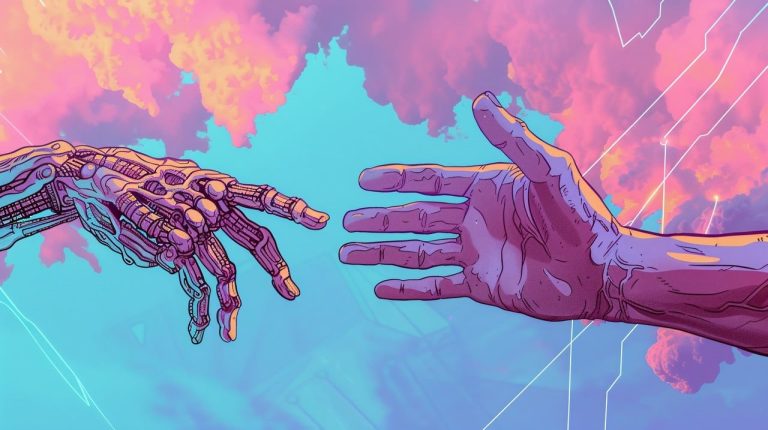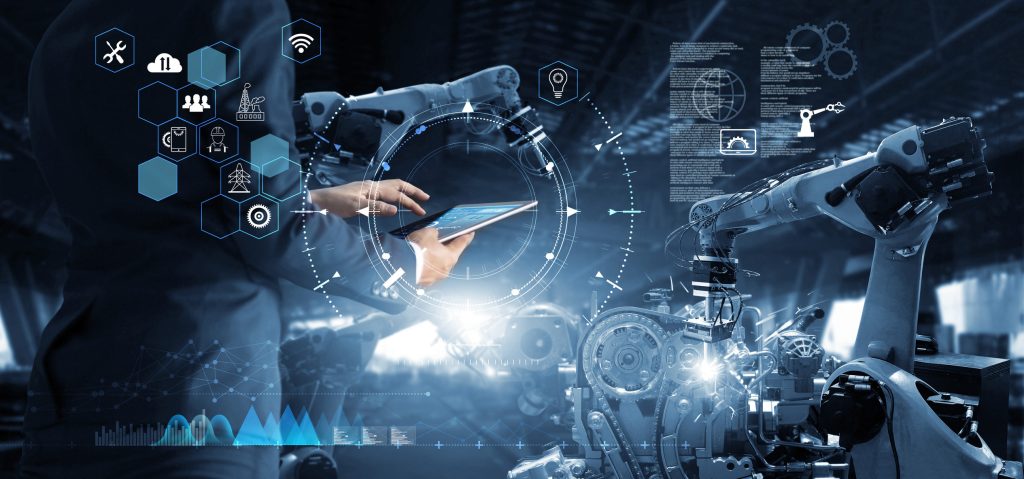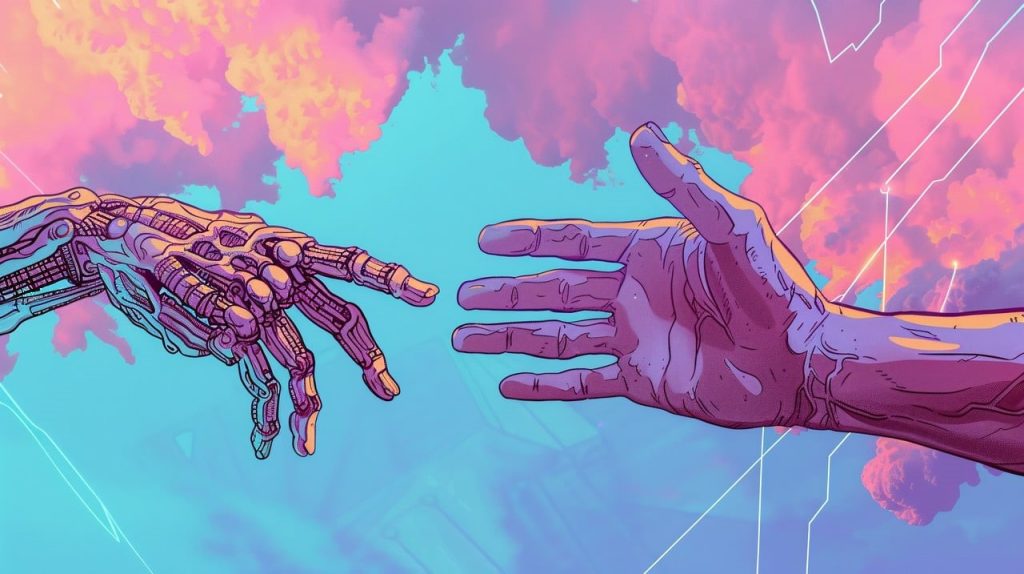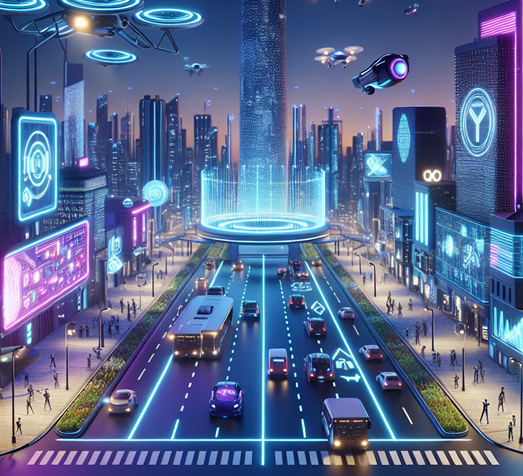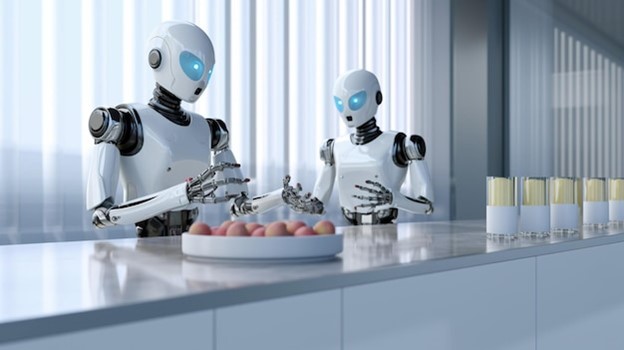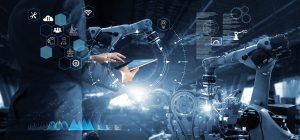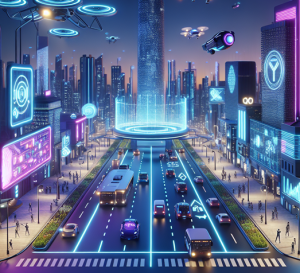Technologies are in a phase of continuous and fast progress, with advanced technology emerging as the foundation of social progress. It’s now important to look into these advancements and prepare for the opportunities and challenges that are ready to redefine our knowledge.
Artificial Intelligence
New possibilities are opened for problem-solving and quick decision-making as Artificial Intelligence (AI) is transforming industries.
Now AI can craft poetry, compose articles from simplest of prompts, analyse data from large datasets, diagnose complex problems, personalized treatments, and many more.
This is not only an achievement in technology sector; it’s a paradigm shift in our understanding of machine learning and its impact on human behaviour.
Its analytical skill could offer solutions to some of the most concerning issues, including climate change, advanced healthcare diagnostics and agriculture.
Adapting is important, but at the same time, ensuring AI remains only a tool that increases human capabilities rather than replacing them entirely is far more important.
In the coming years, we can expect AI to become more trained, practically integrated into daily life and capable of handling complex tasks.
These developments will challenge our concepts of tasks as they were once considered “exclusive to human intelligence.”
Quantum Computing
Quantum computing is an advanced technology feature. Unlike normal computers that use bits and bytes, quantum computers comes with quantum bits or qubits.
Quantum computing will redefine our knowledge of aerospace, healthcare, logistics and financial modelling. Its ability to process huge and complex datasets and simulate complex interactions could lead to developing new materials, aligning supply chains and enhancing operational processes. We can expect to see hybrid systems of quantum and conventional computing and this convergence will multiply the outcomes as it utilizes the strength of both. New era of computational power is on its way, enabling us to tackle problems that were once considered unsolvable.
Biotechnology and Genetic Engineering
The field of biotechnology, particularly genetic engineering, is revolutionizing areas such as healthcare, agriculture, armoury and even our understanding of life itself.
A major development in this field is CRISPR gene editing technology. Scientists can make precise changes to DNA with accuracy. The potential applications are vast, it can range from curing genetic diseases to creating more durable field crops. CRISPR technology will continue to progress, and we may see personalized medication according to the genetic structure become a reality.
Another innovative part is synthetic biology, which involves designing and constructing new biological parts, devices, structures and systems. This creates bio-based materials, developing new pharmaceuticals, and even producing sustainable fuels. It can engineer creatures with desired and specific functions that could lead to environmental clean-up, energy production and manufacturing.
Regenerative medicine is also making progress. Stem cell research and tissue engineering are opening up possibilities for growing replacement organs, healing deep spinal cord injuries, and reversing the effects of progressive diseases.
The combination of biotechnology with other fields like artificial intelligence and nanotechnology confirms even more possibilities. Development of bio-computers, smart tissue self-repair processes, or even biological machines and big systems that can be programmed with software are soon to be implemented.
The Internet of Things (IoT)
This futuristic technology is transforming from a buzzword into a global reality, connecting billions of devices for smart engagements. These smart devices create a more interconnected and responsive environment, from homes and cities to factories and farms.
It also enables unique levels of automation and an energy-efficient environment. Imagine a house that adjusts its temperature based on environmental needs and schedule or a refrigerator that can order groceries when needed. These services show the potential of IoT.
IoT is also leading in smart projects on a larger scale. Connected infrastructure can reduce energy consumption, optimize traffic and improve public service areas. For instance, smart waste management systems can notify and alert public health departments when bins need emptying, leading to more efficient allocation of resources and cleaner environments.
Interconnected equipment can predict failures and alert the technical team in time, reducing downtime and costs. Real-time data derived from the production process facilitates optimization and quality control.
IoT is also affecting the agriculture sector. Farmers may now make data-driven decisions by using sensors to monitor soil and growth techniques, weather patterns, environmental changes, and field area forecasts. This encourages more dependable farming methods in addition to raising yields.
We may anticipate seeing increasingly sophisticated IoT applications as 5G networks grow.
Augmented and Virtual Reality
These technologies are expanding and now are not only limited to the gaming industry. They have shown how to reform the education, healthcare, business, and especially the entertainment sectors.
One major development in AR is the concept of the “metaverse” – a permanent and sustained shared virtual space that merges with physical and digital experiences. This could change the way we work, deal with, analyse and socialize with digital content, creating several opportunities for collaboration.
On the other hand, Virtual reality engages users in computer environments. Its applications are also expanding. In education, VR can transport students to historical events and places, providing earlier impossible learning experiences.
VR is being used in the medical field to manage patients. While gamified VR workouts might inspire patients undergoing therapy, surgeons can practice procedures in virtual environment.
These technologies are also being adopted by the corporate sector. Remote work may be transformed by virtual meetings, which offer a genuine sensation of presence. . AR is being used in retail to allow customers to try on clothes or see how furniture would fit in their homes before making a purchase.
The line between AR and VR is likely to reduce significantly in the coming future, giving rise to Mixed Reality (MR) experiences that mix the physical and digital worlds.
Robotics and Automation
This futuristic technology is becoming a significant aspect of our world and is no longer just found in science fiction.
One of the major advances in robotics is the integration of artificial intelligence, enabling machines to learn, adapt, get trained and make decisions. More advanced and adaptable robots that can carry out difficult tasks in challenging circumstances are being created by the combination of artificial intelligence and robotics.
Collaborative robots (also known as “cobots”) are machines that work alongside humans in manufacturing to ensure safety and productivity. These robots are made and programmed to collaborate with people, carrying out challenging or repetitive jobs so that people can concentrate on more intricate production-related duties.
Robotics advancements are also helping the healthcare industry. Robotic exoskeletons are assisting crippled people in regaining their mobility, and surgical robots are precisely carrying out less invasive treatments.
In space exploration, robots are taking the role of our hands and eyes. We may now explore and possibly utilize resources in places too hazardous for humans thanks to robotic technology.
Nearer to home, the idea of domestic robots is developing from basic vacuum cleaners to personal assistants that can carry out a variety of everyday household duties.
Robots will likely become increasingly more integrated in our daily lives. Human-robot interaction and assistance is expected to grow significantly, from self-driving automobiles to drone delivery systems. Soft robotics may also progress, with devices that can alter their characteristics and form to suit various jobs and settings.
Renewable Energy Technologies
To attract the environment and to decrease our dependence on fossil fuels, this modern technology is making progress, suggesting a cleaner, a lot more lasting future. New products and various manufacturing techniques are making solar panels extra efficient and affordable. For example, Perovskite solar batteries provide greater efficiency at reasonably reduced cost compared to silicon-based cells. On the other hand, the advancement of transparent solar cells can change structure windows glasses into power-generating surfaces. Offshore wind farms are ending up being significantly practical, with floating generators opening new possibilities for utilizing wind power in deep waters. Taller turbines with longer blades are generating lot more energy on land from higher elevation winds, boosting the effectiveness and outcome of wind ranches. Power storage space is an essential variable of renewable resource systems. Battery innovation with brand-new chemistries promises greater power concentrations, faster charging times, and longer lifespans. Past lithium-ion batteries, we’re seeing developments in circulation batteries, solid-state batteries, and also gravity-based energy storage systems. Hydrogen fuel cells are obtaining grasp as a clean energy service, especially for transport and industrial applications. An emerging hydrogen economic climate could supply zero-emission power providers.
In Future, integration of different technologies in smart grids will use AI to balance energy supply and demand in real-time. This will:
- Optimize energy distribution
- Create green jobs
- Change how communities produce and use energy
Space Technology
Driven by both government and private sector. Rise in space technology completely changes our knowledge of the universe.
One of the major developments in space technology is the focus on lunar exploration. Several countries and private companies are planning missions to the Moon with the goal of establishing a permanent platform. Such systems might function as gateways for interplanetary space missions.
Mars exploration also continues, with plans for both robotic missions and human landings. Advancements in propulsion technology, sustainable life support systems, and radiation shielding are making the prospect of a crewed Mars mission feasible. The development of in-situ resource utilization (ISRU) technologies could produce fuel and oxygen from Martian resources.
Space tourism is also progressing, companies manufacturing vehicles that go around the space orbit. This progress could result in the emergence of new industries and provide opportunities for scientific research.
Space-based solar power is another area of deep interest and research. The concept is collecting the solar energy directly from sun and storing somewhere in space and then beaming it back to Earth, providing a constant, clean source of energy regardless of weather conditions.
Swift progress of these technologies consistently pushing the limits of what can be achieved, and this process is not out of implementation.
Looking Ahead: Navigating the Technological Boundary
As we step into 2025 and beyond, we find ourselves at the crossroads of a technological revolution. The convergence of artificial intelligence, biotechnology, quantum computing, and breakthroughs in space exploration and energy sector signals the start of a new and exciting era. These advancements have potential to tackle some of the world’s most pressing concerns, clearing the way for a brighter future.
However, this technological revolution and innovation isn’t without its challenges. The landscape of futuristic technology is filled with both hope and challenge. Cross-disciplinary collaboration and international cooperation will be the cornerstones of responsible and effective technological progress.
As we navigate into this, our collective wisdom and far-vision will determine the outcome of these powerful tools to benefit humanity as a whole.

